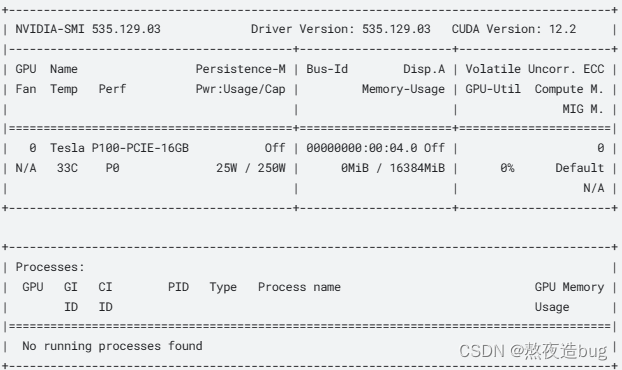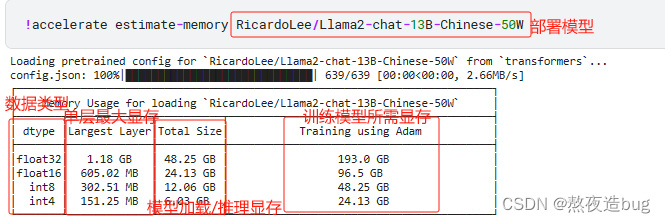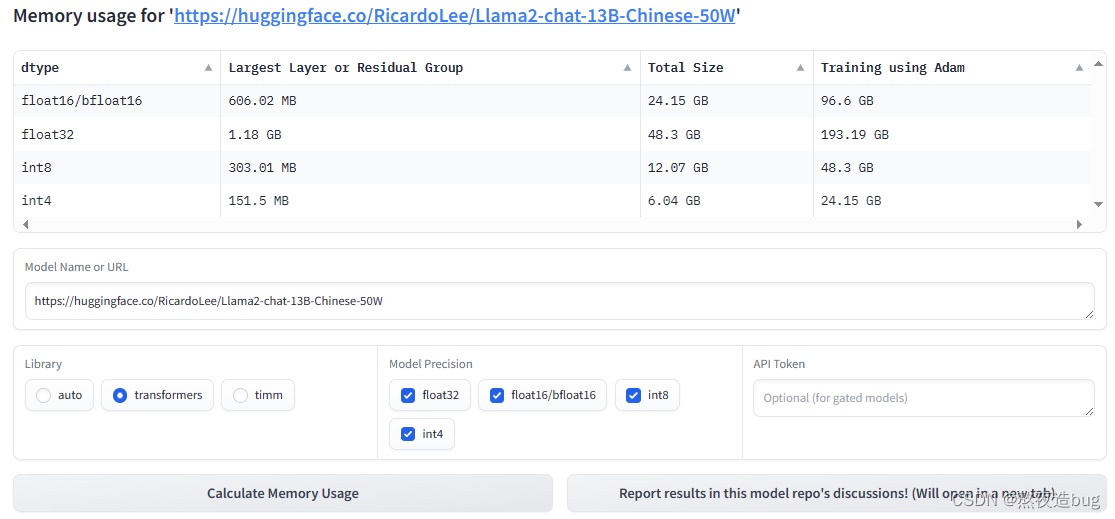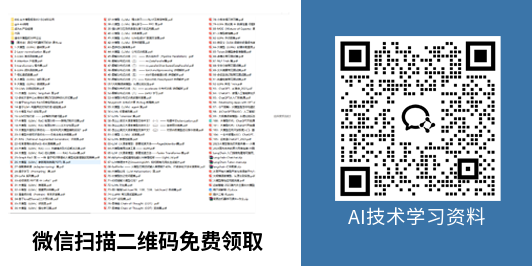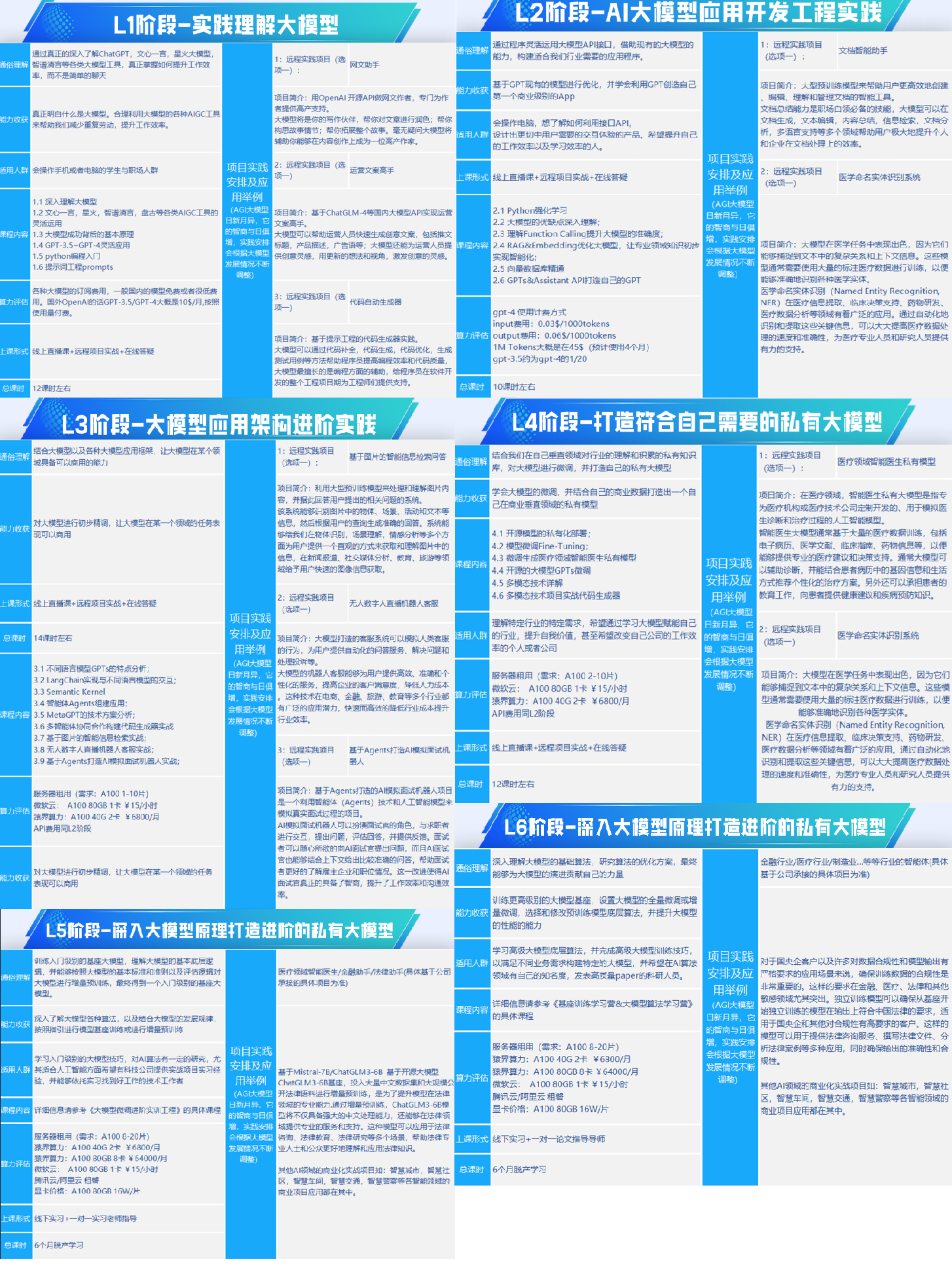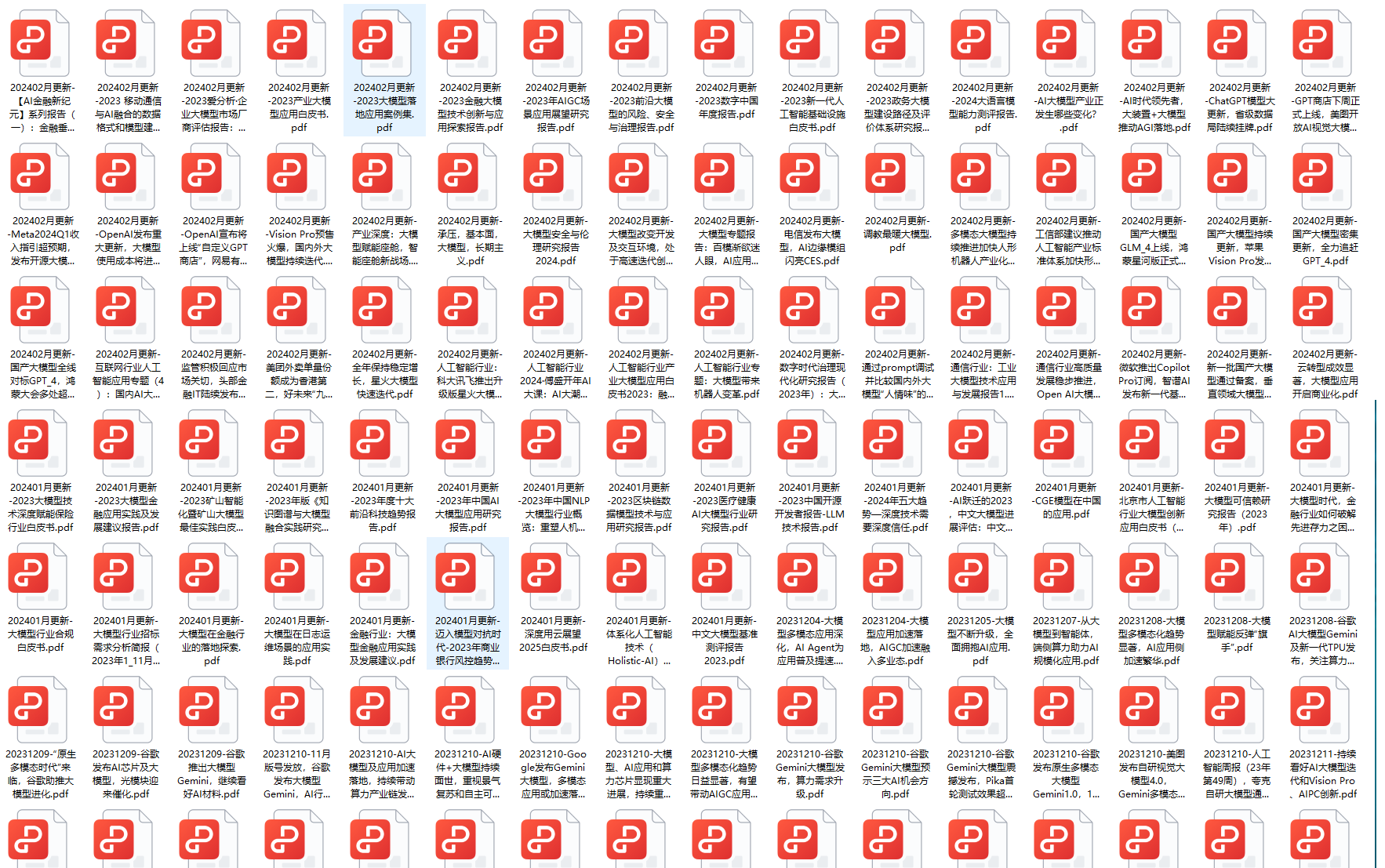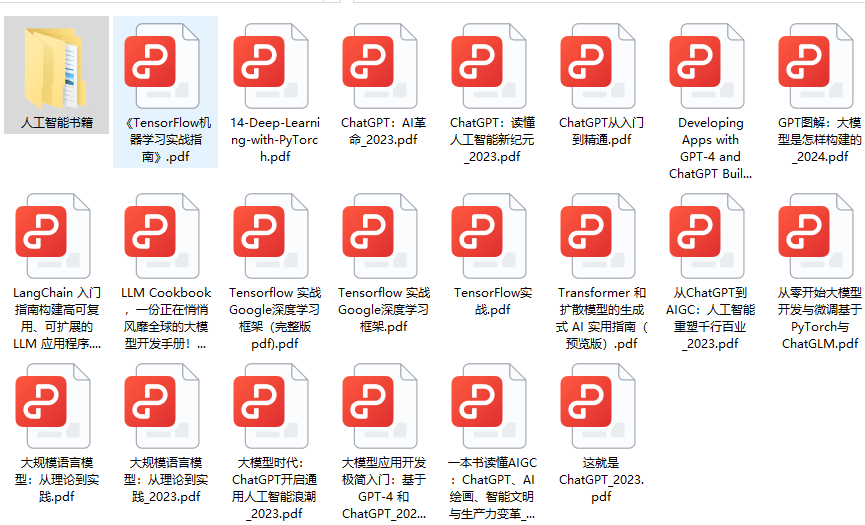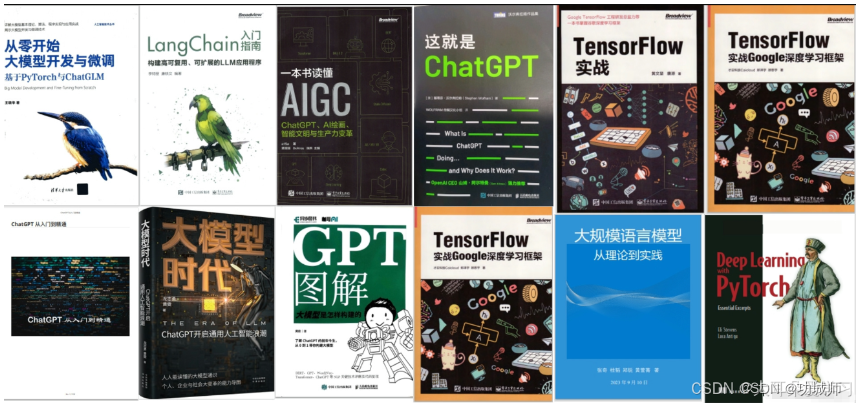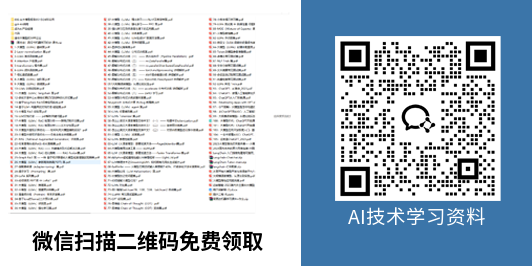文章目录
前言
一、大模型基座
二、大模型部署
1. LLM部署环境查询
2. Llama2部署
3. Llama2+QLoRA微调
4.Llama2+LangChain外挂知识库
总结
前言
LLM基座官方文档如下(科学上网):
-
Llama:
_Github: [https://github.com/ymcui/Chinese-LLaMA-Alpaca-2](https://github.com/ymcui/Chinese-LLaMA-Alpaca-2 "https://github.com/ymcui/Chinese-LLaMA-Alpaca-2")_ _Huggingface: [https://huggingface.co/meta-llama](https://huggingface.co/meta-llama "https://huggingface.co/meta-llama")_ -
ChatGLM
_Github: [https://github.com/THUDM/ChatGLM3](https://github.com/THUDM/ChatGLM3 "https://github.com/THUDM/ChatGLM3")_ _Huggingface: [https://huggingface.co/THUDM](https://huggingface.co/THUDM "https://huggingface.co/THUDM")_ -
Baichuan
_Github: [https://github.com/baichuan-inc](https://github.com/baichuan-inc "https://github.com/baichuan-inc")_ _Huggingface:_ [https://huggingface.co/baichuan-inc](https://huggingface.co/baichuan-inc "https://huggingface.co/baichuan-inc") -
Qwen
_Github:_ [https://github.com/QwenLM](https://github.com/QwenLM " https://github.com/QwenLM") _Huggingface:_ [baichuan-inc (Baichuan Intelligent Technology) (huggingface.co)](https://huggingface.co/baichuan-inc "baichuan-inc (Baichuan Intelligent Technology) (huggingface.co)")
提示:以下是本篇文章正文内容,下面案例可供参考
一、大模型基座
面LLM岗大概率会cue的内容,详见文章大模型升级与设计之道:ChatGLM、LLAMA、Baichuan及LLM结构解析 - 知乎 (zhihu.com)
该文章从原理、性能、差异、迭代版本系统地介绍了现在较受欢迎的LLM(目前ChatGLM4、Baichuan3已闭源):
二、大模型部署(以Llama2为例)
1. LLM部署环境查询
1.1. 查看服务器GPU显存及占用
# 每0.5s刷新一次
!wathch -d -n 0.5 nvidia-smi
1.2. 模型部署所需显存查询
# 1.2.1 安装依赖包
!pip install accelerate transformers
# 1.2.2 查看RicardoLee/Llama2-chat-13B-Chinese-50W显存(网络层单层最大显存、推理显存、训练显存)
!accelerate estimate-memory RicardoLee/Llama2-chat-13B-Chinese-50W
# 1.2.3 也可以点击在线测试链接
https://huggingface.co/spaces/hf-accelerate/model-memory-usage
2. Llama2部署
2.1. 本地部署
# 2.1.1 执行git lfs install
curl -s https://packagecloud.io/install/repositories/github/git-lfs/script.deb.sh | sudo bash
sudo apt-get install git-lfs
# 2.1.2 克隆模型到服务器(Llama2-chat-13B-Chinese-50W)
git clone https://huggingface.co/RicardoLee/Llama2-chat-13B-Chinese-50W
### 如果遇到模型大文件无法下载,通过wget从huggingface上下载
wget https://huggingface.co/RicardoLee/Llama2-chat-13B-Chinese-50W/resolve/main/pytorch_model-00001-of-00003.bin
wget https://huggingface.co/RicardoLee/Llama2-chat-13B-Chinese-50W/resolve/main/pytorch_model-00002-of-00003.bin
wget https://huggingface.co/RicardoLee/Llama2-chat-13B-Chinese-50W/resolve/main/pytorch_model-00003-of-00003.bin
2.2 网页可视化(下载并部署gradio)
从这个链接里:https://github.com/ymcui/Chinese-LLaMA-Alpaca/blob/main/scripts/inference/gradio_demo.py
里的gradio_demo.py和requirements.txt下载到服务器
# 2.2.1 安装依赖
!pip install -r requirements.txt
# 2.2.2 把gradio.py里59、60、61行注释掉
!pip install gradio
# 2.2.3 安装其他依赖包
!pip install bitsandbytes accelerate scipy
# 2.2.4 cd Llama2路径
!python gradio_demo.py --base_model /root/autodl-tmp/Llama2-chat-13B-Chinese-50W --tokenizer_path /root/autodl-tmp/Llama2-chat-13B-Chinese-50W --gpus 0
Llama2部署可视化
3. Llama2+QLoRA微调
3.1. 数据预处理
# 3.1.1 下载BelleGroup提供的50w条中文数据(注意数据量有点大)
wget https://huggingface.co/datasets/BelleGroup/train_0.5M_CN/resolve/main/Belle_open_source_0.5M.json
# 3.1.2 新建split_json.py文件,粘贴如下代码
import random,json
def write_txt(file_path,datas):
with open(file_path,"w",encoding="utf8") as f:
for d in datas:
f.write(json.dumps(d,ensure_ascii=False)+"\n")
f.close()
with open("/root/autodl-tmp/Belle_open_source_0.5M.json","r",encoding="utf8") as f:
lines=f.readlines()
#拼接数据
changed_data=[]
for l in lines:
l=json.loads(l)
changed_data.append({"text":"### Human: "+l["instruction"]+" ### Assistant: "+l["output"]})
#从拼好后的数据中,随机选出1000条,作为训练数据
#为了省钱 和 演示使用,我们只用1000条,生产环境至少要使用全部50w条
r_changed_data=random.sample(changed_data, 1000)
#写到json中,root根据需求自行修改
write_txt("/root/autodl-tmp/Belle_open_source_0.5M_changed_test.json",r_changed_data)
# 3.1.3 新建终端运行split_json.py,切分数据集为json格式
!python split_json.py
3.2. 运行微调文件
# 3.2.1 安装依赖
!pip install -q huggingface_hub
!pip install -q -U trl transformers accelerate peft
!pip install -q -U datasets bitsandbytes einops wandb
# 3.2.2 运行微调文件
# (1)导入相关包
from datasets import load_dataset
import torch,einops
from transformers import AutoModelForCausalLM, BitsAndBytesConfig, AutoTokenizer, TrainingArguments
from peft import LoraConfig
from trl import SFTTrainer
# (2)加载python split_json.py拼接好之后的1000条数据
dataset = load_dataset("json",data_files="/root/autodl-tmp/Belle_open_source_0.5M_changed_test.json",split="train")
# (3)模型配置
base_model_name ="/root/autodl-tmp/Llama2-chat-13B-Chinese-50W" # 路径需要根据模型部署路径修改
bnb_config = BitsAndBytesConfig(
load_in_4bit=True, #在4bit上,进行量化
bnb_4bit_use_double_quant=True, # 嵌套量化,每个参数可以多节省0.4位
bnb_4bit_quant_type="nf4", #NF4(normalized float)或纯FP4量化 博客说推荐NF4
bnb_4bit_compute_dtype=torch.float16)
# (4)QloRA微调参数配置
peft_config = LoraConfig(
lora_alpha=16,
lora_dropout=0.1,
r=64,
bias="none",
task_type="CAUSAL_LM",
)
# (5)加载部署好的本地模型(Llama)
base_model = AutoModelForCausalLM.from_pretrained(
base_model_name,#本地模型名称
quantization_config=bnb_config,#上面本地模型的配置
device_map=device_map,#使用GPU的编号
trust_remote_code=True,
use_auth_token=True
)
base_model.config.use_cache = False
base_model.config.pretraining_tp = 1
# (6)长文本拆分成最小的单元词(即token)
tokenizer = AutoTokenizer.from_pretrained(base_model_name, trust_remote_code=True)
tokenizer.pad_token = tokenizer.eos_token
# (7)训练参数配置
output_dir = "./results"
training_args = TrainingArguments(
report_to="wandb",
output_dir=output_dir, #训练后输出目录
per_device_train_batch_size=4, #每个GPU的批处理数据量
gradient_accumulation_steps=4, #在执行反向传播/更新过程之前,要累积其梯度的更新步骤数
learning_rate=2e-4, #超参、初始学习率。太大模型不稳定,太小则模型不能收敛
logging_steps=10, #两个日志记录之间的更新步骤数
max_steps=100 #要执行的训练步骤总数
)
max_seq_length = 512
#TrainingArguments 的参数详解:https://blog.csdn.net/qq_33293040/article/details/117376382
trainer = SFTTrainer(
model=base_model,
train_dataset=dataset,
peft_config=peft_config,
dataset_text_field="text",
max_seq_length=max_seq_length,
tokenizer=tokenizer,
args=training_args,
)
# (8)运行程序,进行微调
trainer.train()
# (9)保存模型
import os
output_dir = os.path.join(output_dir, "final_checkpoint")
trainer.model.save_pretrained(output_dir)
3.3. 执行代码合并
新建merge_model.py的文件,把下面的代码粘贴进去, 然后然后执行上述合并代码,进行合并。终端运行python merge_model.py。
from peft import PeftModel
from transformers import AutoModelForCausalLM, AutoTokenizer
import torch
#设置原来本地模型的地址
model_name_or_path = '/root/autodl-tmp/Llama2-chat-13B-Chinese-50W'
#设置微调后模型的地址,就是上面的那个地址
adapter_name_or_path = '/root/autodl-tmp/results/final_checkpoint'
#设置合并后模型的导出地址
save_path = '/root/autodl-tmp/new_model'
tokenizer = AutoTokenizer.from_pretrained(
model_name_or_path,
trust_remote_code=True
)
model = AutoModelForCausalLM.from_pretrained(
model_name_or_path,
trust_remote_code=True,
low_cpu_mem_usage=True,
torch_dtype=torch.float16,
device_map='auto'
)
print("load model success")
model = PeftModel.from_pretrained(model, adapter_name_or_path)
print("load adapter success")
model = model.merge_and_unload()
print("merge success")
tokenizer.save_pretrained(save_path)
model.save_pretrained(save_path)
print("save done.")
4.Llama2+LangChain外挂知识库
4.1. 安装依赖库
!pip install -U langchain unstructured nltk sentence_transformers faiss-gpu
4.2. 外挂知识库 & 向量存储 & 问题/向量检索
# 4.2.0 导包
from langchain.document_loaders import UnstructuredFileLoader
from langchain.text_splitter import RecursiveCharacterTextSplitter
from langchain.embeddings.huggingface import HuggingFaceEmbeddings
from langchain.vectorstores import FAISS
# 4.2.1 加载外部知识库
filepath="/root/autodl-tmp/knowledge.txt"
loader=UnstructuredFileLoader(filepath) # 把带格式的文本,读取为无格式的纯文本
docs=loader.load()
print(docs) # 返回的是一个列表,列表中的元素是Document类型
# 4.2.2 对读取的文档进行chunk
text_splitter=RecursiveCharacterTextSplitter(chunk_size=20,chunk_overlap=10)
docs=text_splitter.split_documents(docs)
# 4.2.3 下载并部署embedding模型
执行:git lfs install
执行:git clone https://huggingface.co/GanymedeNil/text2vec-large-chinese
如果有大文件下载不下来,执行
wget https://huggingface.co/GanymedeNil/text2vec-large-chinese/resolve/main/pytorch_model.bin
wget https://huggingface.co/GanymedeNil/text2vec-large-chinese/resolve/main/model.safetensors
# 4.2.4 使用text2vec-large-chinese模型,对上面chunk后的doc进行embedding。然后使用FAISS存储到向量数据库
import os
embeddings=HuggingFaceEmbeddings(model_name="/root/autodl-tmp/text2vec-large-chinese", model_kwargs={'device': 'cuda'})
if os.path.exists("/root/autodl-tmp/my_faiss_store.faiss")==False:
vector_store=FAISS.from_documents(docs,embeddings)
else:
vector_store=FAISS.load_local("/root/autodl-tmp/my_faiss_store.faiss",embeddings=embeddings)
#注意:如果修改了知识库(knowledge.txt)里的内容,则需要把原来的 my_faiss_store.faiss 删除后,重新生成向量库。
# 4.2.5 加载模型
import torch
from transformers import AutoTokenizer, AutoModelForCausalLM
#先做tokenizer
tokenizer = AutoTokenizer.from_pretrained('/root/autodl-tmp/Llama2-chat-13B-Chinese-50W',trust_remote_code=True)
#加载本地基础模型
base_model = AutoModelForCausalLM.from_pretrained(
"/root/autodl-tmp/Llama2-chat-13B-Chinese-50W",
torch_dtype=torch.float16,
device_map='auto',
trust_remote_code=True
)
model=base_model.eval()
#4.2.6 向量检索:通过用户问句,到向量库中,匹配相似度高的文本
query="小白的父亲是谁?"
docs=vector_store.similarity_search(query)#计算相似度,并把相似度高的chunk放在前面
context=[doc.page_content for doc in docs]#提取chunk的文本内容
print(context)
# 4.2.7 构造prompt_template
my_input="\n".join(context)
prompt=f"已知:\n{my_input}\n请回答:{query}"
print(prompt)
# 4.2.8 把prompt输入模型进行预测
inputs = tokenizer([f"Human:{prompt}\nAssistant:"], return_tensors="pt")
input_ids = inputs["input_ids"].to('cuda')
generate_input = {
"input_ids":input_ids,
"max_new_tokens":1024,
"do_sample":True,
"top_k":50,
"top_p":0.95,
"temperature":0.3,
"repetition_penalty":1.3
}
generate_ids = model.generate(**generate_input)
new_tokens = tokenizer.decode(generate_ids[0], skip_special_tokens=True)
print("new_tokens",new_tokens)
推理结果:
总结
章节一引用《大模型升级与设计之道:ChatGLM、LLAMA、Baichuan及LLM结构解析》一文,该文章从原理、性能、差异、迭代版本系统地介绍了现在较受欢迎的LLM(目前ChatGLM4、Baichuan3已闭源)。
章节二以Llama2举例,演示了从部署环境查询、到模型部署、再到微调、最后到LangChain外挂知识库实现向量检索增强(RAG)的流程。
掌握本文流程、学习框架,后续大模型业务均可在其基础上进行延伸,其它LLM模型部署demo在前言部分的官方开源文档亦可查询。
如何系统的去学习大模型LLM ?
作为一名热心肠的互联网老兵,我意识到有很多经验和知识值得分享给大家,也可以通过我们的能力和经验解答大家在人工智能学习中的很多困惑,所以在工作繁忙的情况下还是坚持各种整理和分享。
但苦于知识传播途径有限,很多互联网行业朋友无法获得正确的资料得到学习提升,故此将并将重要的 AI大模型资料 包括AI大模型入门学习思维导图、精品AI大模型学习书籍手册、视频教程、实战学习等录播视频免费分享出来。
😝有需要的小伙伴,可以V扫描下方二维码免费领取🆓
一、全套AGI大模型学习路线
AI大模型时代的学习之旅:从基础到前沿,掌握人工智能的核心技能!
二、640套AI大模型报告合集
这套包含640份报告的合集,涵盖了AI大模型的理论研究、技术实现、行业应用等多个方面。无论您是科研人员、工程师,还是对AI大模型感兴趣的爱好者,这套报告合集都将为您提供宝贵的信息和启示。
三、AI大模型经典PDF籍
随着人工智能技术的飞速发展,AI大模型已经成为了当今科技领域的一大热点。这些大型预训练模型,如GPT-3、BERT、XLNet等,以其强大的语言理解和生成能力,正在改变我们对人工智能的认识。 那以下这些PDF籍就是非常不错的学习资源。
四、AI大模型商业化落地方案
阶段1:AI大模型时代的基础理解
- 目标:了解AI大模型的基本概念、发展历程和核心原理。
- 内容:
- L1.1 人工智能简述与大模型起源
- L1.2 大模型与通用人工智能
- L1.3 GPT模型的发展历程
- L1.4 模型工程
- L1.4.1 知识大模型
- L1.4.2 生产大模型
- L1.4.3 模型工程方法论
- L1.4.4 模型工程实践 - L1.5 GPT应用案例
阶段2:AI大模型API应用开发工程
- 目标:掌握AI大模型API的使用和开发,以及相关的编程技能。
- 内容:
- L2.1 API接口
- L2.1.1 OpenAI API接口
- L2.1.2 Python接口接入
- L2.1.3 BOT工具类框架
- L2.1.4 代码示例 - L2.2 Prompt框架
- L2.2.1 什么是Prompt
- L2.2.2 Prompt框架应用现状
- L2.2.3 基于GPTAS的Prompt框架
- L2.2.4 Prompt框架与Thought
- L2.2.5 Prompt框架与提示词 - L2.3 流水线工程
- L2.3.1 流水线工程的概念
- L2.3.2 流水线工程的优点
- L2.3.3 流水线工程的应用 - L2.4 总结与展望
- L2.1 API接口
阶段3:AI大模型应用架构实践
- 目标:深入理解AI大模型的应用架构,并能够进行私有化部署。
- 内容:
- L3.1 Agent模型框架
- L3.1.1 Agent模型框架的设计理念
- L3.1.2 Agent模型框架的核心组件
- L3.1.3 Agent模型框架的实现细节 - L3.2 MetaGPT
- L3.2.1 MetaGPT的基本概念
- L3.2.2 MetaGPT的工作原理
- L3.2.3 MetaGPT的应用场景 - L3.3 ChatGLM
- L3.3.1 ChatGLM的特点
- L3.3.2 ChatGLM的开发环境
- L3.3.3 ChatGLM的使用示例 - L3.4 LLAMA
- L3.4.1 LLAMA的特点
- L3.4.2 LLAMA的开发环境
- L3.4.3 LLAMA的使用示例 - L3.5 其他大模型介绍
- L3.1 Agent模型框架
阶段4:AI大模型私有化部署
- 目标:掌握多种AI大模型的私有化部署,包括多模态和特定领域模型。
- 内容:
- L4.1 模型私有化部署概述
- L4.2 模型私有化部署的关键技术
- L4.3 模型私有化部署的实施步骤
- L4.4 模型私有化部署的应用场景
学习计划:
- 阶段1:1-2个月,建立AI大模型的基础知识体系。
- 阶段2:2-3个月,专注于API应用开发能力的提升。
- 阶段3:3-4个月,深入实践AI大模型的应用架构和私有化部署。
- 阶段4:4-5个月,专注于高级模型的应用和部署。
这份完整版的大模型 LLM 学习资料已经上传CSDN,朋友们如果需要可以微信扫描下方CSDN官方认证二维码免费领取【保证100%免费】
😝有需要的小伙伴,可以Vx扫描下方二维码免费领取🆓
